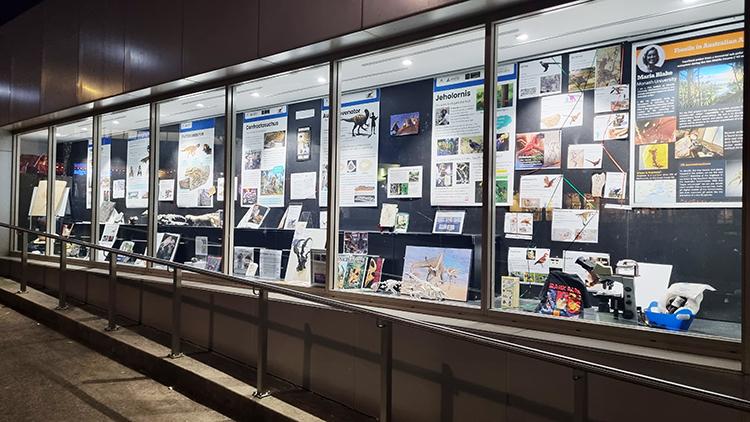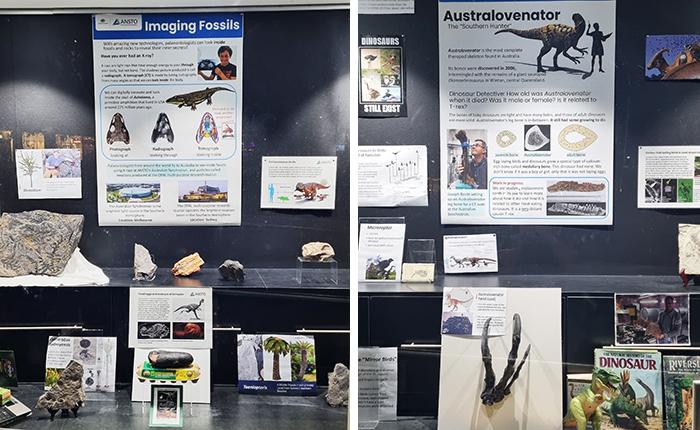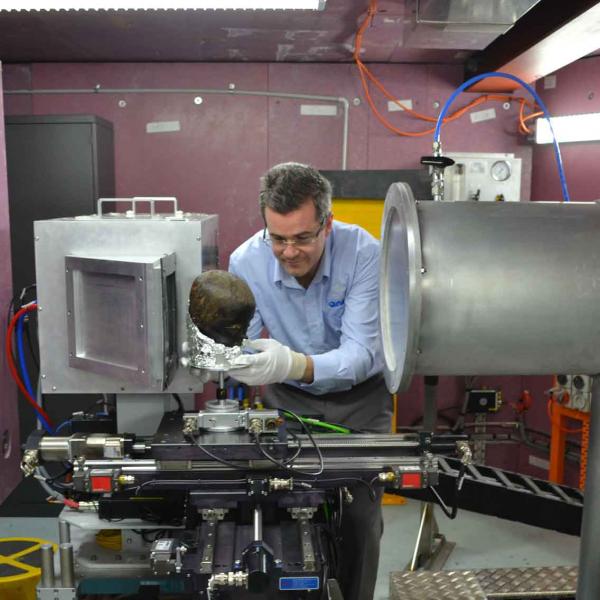

Published on the 24th November 2023 by ANSTO Staff
The capability of the neutron tomography instrument Dingo to analyse fossils has been featured on the cover of a prestigious US science magazine Science News, and is also the subject of an exhibition on display in Blacktown.
Instrument scientist Dr Jospeh Bevitt, who specialises using subatomic neutron to image ancient objects, provided comments to the magazine, which featured an article on “How neutron imaging uncovers hidden secrets of fossils and artifacts.”
The research on Confractosuchus sauroktonos, the ancient crocodile that ate a baby dinosaur, whose remains were preserved in the fossilised crocodile (as featured on this website) was highlighted by the magazine with other examples.
In a related development,Stanhope Garden Library/Blacktown Leisure Centre Stanhope has a Palaeontology window display that showcases the work of Dr Joseph Bevitt, the neutron tomography instrument Dingo, and the Imaging and Medical Beamline at the Australian Synchrotron.
A series of posters and artefacts bring the story of deciphering fossils to life in 3D.


The penetrating but non-destructive nuclear technique has been used to reveal information for Australian and international fossils.
The display will be up until the end of December.
Everyone loves a dinosaur story and we are like detectives who can read the clues contained in the rock to re-capture the past.
“It’s great science and thrilling work,” said Dr. Bevitt, who has generated images of fossils over the last decade with Australian and international collaborators, and the museums that hold these ancient remains.

